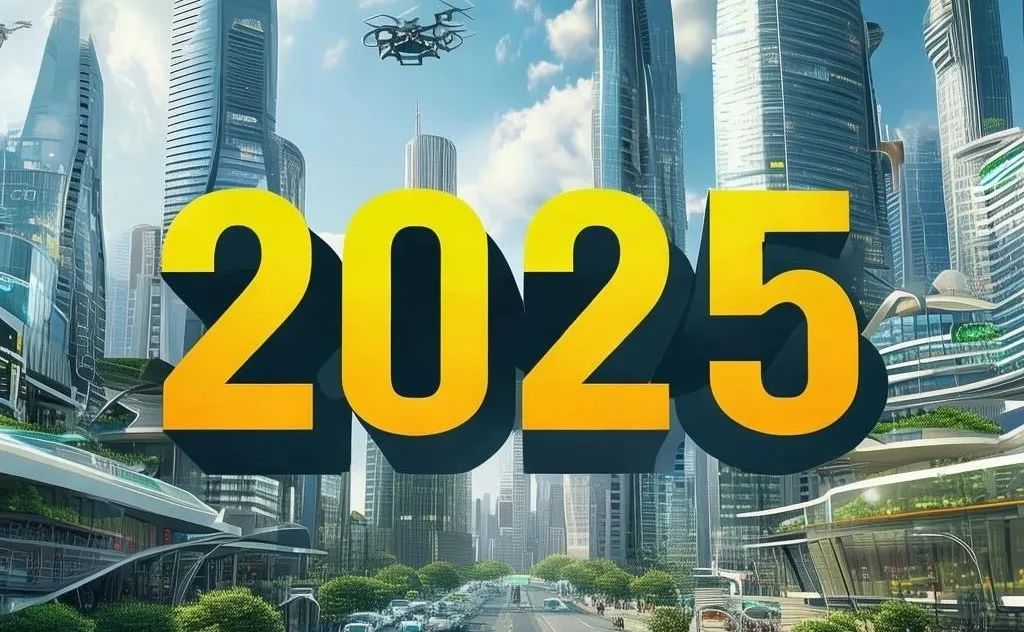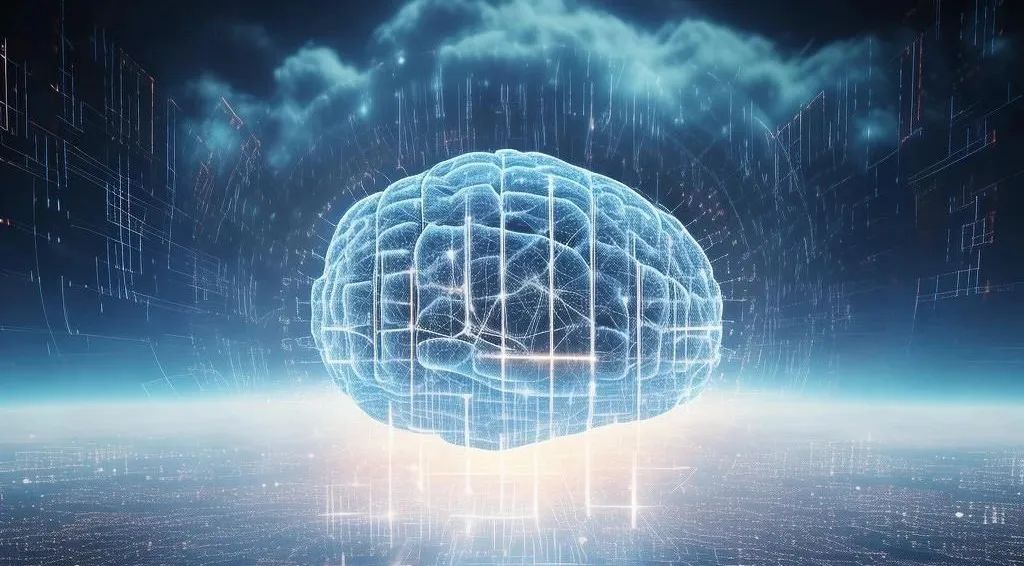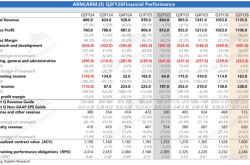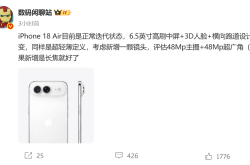Insight into the 2025 Technology Trend: The Convergence of Technologies Heralds the "Era of Intelligent Computing"
![]() 12/31 2024
12/31 2024
![]() 539
539
As 2024 draws to a close, anticipation builds for the upcoming year of 2025, widely regarded as a pivotal juncture in the tech industry, heralding a new era. At this threshold, we stand poised to witness the transformative power of future technologies. From artificial intelligence to quantum computing, gene editing to space exploration, each groundbreaking advancement signals a profound shift in our world.
With the advancement of artificial intelligence, we envision a future where AI, cloud computing, and computational power seamlessly integrate, forming an interdependent, mutually supportive, and synergistic technology ecosystem. This digital engine will propel us into the intelligent era, with AI catalyzing the fusion of cloud computing and intelligent computing, resulting in a smart cloud optimized for AI technology and applications.
Looking ahead to 2025, which technological domains present the most opportunities as AI further integrates with various industries? Who will emerge as the leaders in this new era?

Trend 1: Generative AI Blossoms in the Cloud
Entering the AI 2.0 era, the pace of AI technology development has accelerated dramatically. This surge in AI activity has fueled global demand for AI infrastructure, which has become the cornerstone of the global AI industry's growth. The rapid evolution of AI technology has created an insatiable appetite for computational power, data storage, and processing capabilities, fostering a symbiotic relationship between supply and demand.
In terms of development, AI infrastructure will prioritize advancements in computational power, data storage, green energy at the industrial level, and the 'AI+' strategy for industrial intelligence. Additionally, amidst geopolitical tensions, the competition surrounding AI deployment is intensifying, necessitating a keen focus on security. Furthermore, AI's dual-edged nature and associated risks, coupled with governance challenges related to data security, privacy protection, and cross-border supervision, demand our utmost attention.
Trend 2: Embracing AI-Driven Business Model Transformation
In the coming years, both the IT industry and organizations seeking digital transformation will embrace AI as a core driver. The strategic prioritization, decision-making, and obstacle navigation of enterprises will determine their ability to leverage AI for business growth and competitive advantage.
The evolution of generative AI (GenAI) will reshape the IT market, disrupting competition and cooperation dynamics. The division of labor in the intelligent era will transition from traditional hardware, software, services, and cloud to intelligent computing devices, services, model services, and applications.
In 2025, the Chinese market will witness AI-driven business model transformations, with policies emphasizing digital and intelligent upgrades. Corporate strategies will refocus on business essentials, witnessing the proliferation of intelligent agent business scenarios, the modernization of processes driven by integrated digital platforms, and the disruption and reconstruction of ecosystems through skills transformation.
Moreover, the terminal ecosystem is evolving towards integration, intelligence, and diversification, with AI applications increasingly embedded within it. AI agents will spearhead the shift from physical to virtual scenario terminal entry points, catalyzing the rapid development of mobile office and educational learning scenarios. Additionally, full-stack AI large model solutions will become a crucial consideration in selecting cloud service providers, as data privacy and security become paramount as AI applications expand.
Trend 3: 'Cloud + AI' Ushers in a New Era of Intelligent Services
In 2025, the value of cloud computing in enhancing AI computational power and efficiency will continue to be explored, profoundly impacting society, industry, and human life. As intelligent computational power becomes a globally scarce strategic resource, cloud computing's integrated attribute of computing and scheduling naturally positions it as the optimal solution for addressing computational power supply issues, thus determining the outcome of AI competition.
The cloud computing industry's focus continues to shift upwards, emphasizing improvements in ease of use, security, stability, and optimization. After over a decade of development, the industry has matured, characterized by stable market growth, mature core technologies, stable competitive landscapes, and complete industrial chains.
The underlying technology of cloud computing has been refined, driving development upwards. Aspects related to cloud computing 'engineering implementation,' such as application modernization, stability assurance, cloud-native security, cloud cost optimization, and industry cloud platforms, will increasingly become the core focus of future development.
The innovative development of the 'Cloud + AI' service model heralds a new era for the intelligent cloud computing industry. Technologically, cloud computing and AI are accelerating their integration, with the cloud-network-cloud scheduling operating system fostering the coordinated development of computational power, networks, and cloud computing, accelerating the construction of an efficiently interconnected computational power internet system. Core technologies like computational power identification and the high-performance transmission protocol RDMA will become directions for innovation and development.
On the service side, the evolution of AI technology is accelerating the transformation of computational power structures. Intelligent computational power has become the focal point of future competition. Intelligent cloud computing, which combines 'computational power + AI service capabilities,' will be crucial, and the development of intelligent cloud service technology and applications will become a trend. On the application side, MaaS and AISaaS encapsulate AI capabilities into standardized and convenient cloud computing infrastructure, significantly promoting the deployment and application of large AI models and becoming the focus of development in the coming years.
The widespread application of cloud computing enables better coordinated development of AI and big data. Large-scale data storage and computational needs make cloud computing an ideal platform for enterprises to conduct AI training and big data analysis. Cloud computing will continuously optimize its data processing capabilities and provide AI model training services, enabling enterprises to deploy AI technology faster and more economically. Simultaneously, cloud computing service providers will launch more AI models and data analysis tools to aid enterprises in achieving intelligent transformation.

Trend 4: The Computational Power Industrial Chain Experiences Explosive Growth
The computational power industrial chain is in an unprecedented golden era of development. Every link, from chips to cloud services, optical modules to network equipment, holds immense growth potential. By 2025, the entire industrial chain's market size is expected to surpass the trillion-dollar mark, demonstrating substantial investment potential and development prospects.
Within this chain, computational power chips and AI servers stand out. By 2025, the global market size for AI computational power chips is projected to approach $300 billion, while the AI server market is expected to reach $450 billion, accounting for three-quarters of the entire server market. These sectors' revenue elasticity is anticipated to be four times that of other market segments.
AI servers are evolving from modular to high-density integration, necessitating higher vertical integration capabilities from server manufacturers and early intervention in chip manufacturers' complete machine platform development. This trend will not only propel server technology advancements but also foster coordinated development across the entire computational power industrial chain.
With the advancement of localization processes and deepening vertical integration, we anticipate the computational power industrial chain will inject new momentum into China's high-quality economic development, securing a more prominent position in the global market.
Trend 5: Accelerated Fusion of Human and Machine Intelligence
In 2025, artificial intelligence will transcend being a standalone concept, becoming an integral part of human life. Future AI will evolve from being a mere tool to a partner in corporate decision-making processes.
By analyzing vast amounts of data, AI will aid in making wiser choices and driving productivity improvements. For instance, generative AI is revolutionizing the creative industry, assisting enterprises in creating more engaging content.
Judging by the AI industry's development trajectory, it is currently iterating from L1/L2 (language and logical thinking abilities) towards L3/L4 (multi-modal abilities and tool usage).
Not only are overseas giants like Microsoft and Google intensifying their investments in Agents, but domestic companies like Baidu and Alibaba are also catching up, with mobile phone manufacturers increasing their investments in edge-side AI. Future AI applications will span mobile devices and various apps, evolving from chatbots to tool usage, holding unlimited commercial potential. 2025 may witness explosive AI application growth.

Trend 6: Multi-modal Agents Accelerate the AGI Process
In 2024, generative AI made astonishing progress, indicating enormous potential and boundless prospects for future Artificial General Intelligence (AGI). Large models are continuously enhancing their abilities, from understanding and generation to perception and decision-making. Coupled with explorations in multi-modality, Agents, and embodied intelligence, AI is poised to complete the 'perception-decision-action' closed loop.
Multi-modality is the natural state of the human world, and AGI's development trajectory inevitably leans towards multi-modality. Technology will evolve to encompass various modalities, from text, images, and videos to sound, light, electricity, and even molecules and atoms, with cross-modal migration capabilities.
As AGI approaches, large models are trending towards multi-modality, and AI agents are expected to become the next-generation platform. Currently, large models are shifting to the edge side, offering advantages like higher local data processing efficiency, cost savings on cloud server bandwidth and computational power, enhanced user data privacy protection, and enabling novel interactive methods and experiences, potentially becoming the new entry point for future interactions.
Simultaneously, AI is making significant impacts in mathematical reasoning, new drug development, material discovery, protein synthesis, and other fields. 'AI scientists' are anticipated to emerge at an accelerated pace. With the integration of digital interaction engines and technologies like generative AI, more super digital scenarios will be created in the future, elevating digital-physical integration to new heights.
Trend 7: Addressing Complex Attacks Through Enhanced Defense and Threat Detection
The current focus of global information security development lies in software and hardware in the cloud IoT era. As technologies advance, the complexity of both offensive and defensive strategies has markedly increased, prompting vendors to gradually shift their emphasis from IoT to AI.
In the context of generative AI, the two primary application trends for bolstering information security defense are empowering operators and accelerating threat detection. The former aids operators in using automatic translation to search for and respond to significant risks via natural language. The latter guides users to swiftly identify vulnerabilities and offers operational advice, shortening the detection cycle.
Hackers also leverage generative AI for attacks, such as enumeration analysis and phishing, enhancing attack methods. Further analyzing the creation risks of large models, including operational input-generated incorrect outputs, vulnerabilities introduced during training, incomplete access control, excessive functional authorization, etc., presents information security challenges that enterprises must address when developing AI products and services in 2025.
Trend 8: AI Accelerates the 'Hand and Brain' Evolution of Humanoid Robots
In recent years, the rapid evolution of humanoid robot technology has emerged as a new frontier in technological competition, a new race in future industries, and a new engine for economic growth.
Large models have catalyzed a systematic evolution in humanoid robots, transitioning them from partial to comprehensive capabilities. Initially adorned and intervened by AI, these robots are now AI-driven and evolving from static exhibits to dynamic products, ultimately accelerating toward mass production.
Driven by these large models, humanoid robots have advanced beyond traditional automation, which relied on manual orchestration for initial perception and execution. They have evolved to possess universal atomic capabilities based on basic models, enabling partial transfer of specific task capabilities through single-task orchestrations. This progression has culminated in end-to-end data-driven operations, marking an upgrade from cognitive reasoning and planning large models to end-to-end operational large models, thereby achieving enhanced cross-task generalization capabilities.
At the cognitive level, the integration of large models has significantly bolstered the robot's ability to perceive its environment, decompose tasks, plan processes, and interact with its surroundings. In terms of training platforms, the development of distributed computing platforms that harmonize cloud and edge computing has accelerated the robot's training and analytical decision-making speed. At the execution level, key technologies, epitomized by 'dexterous hands,' have further strengthened the end-execution application capabilities of humanoid robots, particularly in close-range operations.
In the new year, breakthroughs in key technologies will propel humanoid robots closer to human capability levels across various domains, paving the way for their widespread practical application in numerous scenarios.
Over the next decade, all industries stand to benefit from a reinvigoration through artificial intelligence. Undoubtedly, AI will remain at the forefront of technological discourse in 2025. It will increasingly intertwine with various industries, expanding into ever more imaginative and innovative application scenarios, enriching people's lives with smarter and more convenient solutions while reshaping the future landscape of diverse industries.
The mid-game battle for cloud services commences with AI applications.
'The Big Three' of the AI era encompass Generative AI, data, and cloud services.
Is AI serving as a local guide? The Macao Government Tourism Office is slightly ahead of the curve in this regard.
Large models are spearheading the technological wave, posing a 'big test' for AI security governance.
From cloud computing to AI large models, cloud giants are taking a pivotal step in the ecological revolution.
[Original content from Tech Cloud Report]
When reprinting, please indicate 'Tech Cloud Report' and include a link to this article.








